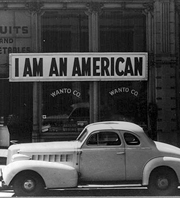Author: Thomas Pynchon
Publication Date: 1966 (2006 edition)
Publisher: Harper Perennial
Genre: Mystery
Genre: Mystery
Pages: 183
Age Rating: Readers over 14
My Opinion: 3/10
Hi, Readers!
Phew, I never realized how exhausting post-modernist novels could be. Reading these novels for American Fiction from 1950 to Present requires my full attention - skipping over a single line of text can leave me feeling confused for chapters on end. This sense of confusion hit me like a truck as soon as I dived into The Crying of Lot 49, by Thomas Pynchon.
 |
| The 'Trystero' sign that Oedipa discovers |
The Crying of Lot 49 is one of the most incomprehensible novels that I have ever reviewed. I don't even know where to start, so I guess I'll just start from the beginning. Oedipa Maas, a housewife living in California, had a previous romantic relationship with a billionaire property owner, Pierce Inverarity. One evening, she discovers that he has passed away and left her as the executor of his will. Naturally, Oedipa has absolutely no clue where to start in executing a will, so she meets with a lawyer, Metzger. The two end up having a whirlwind affair, and Oedipa becomes involved in a conspiracy of sorts involving 'Trystero' and hidden signs around the city of San Narciso.
In case you haven't noticed, I rated Pynchon's novel as a three out of ten. Let me make one thing clear - The Crying of Lot 49 definitely does reach a particular audience (although I'm not quite sure who that may be) and it is certainly renowned in the minds of some readers. However, maybe I just don't understand what Pynchon is trying to get at with his choppy and unnecessary storytelling, but his writing style does not appeal to me whatsoever. He includes ten pages worth of description on a movie that Oedipa and Metzger watch, and he also describes in full detail a gruesome play that Oedipa attends, the two of which were absolute wastes of time. Considering that the novel isn't very long to begin with, I can't help but wonder why Pynchon wasted precious space including these irrelevant stories when he could have been developing his characters or expanding upon his brief discussion of gender roles and identity in society. Plus, he never truly develops the plot of the novel - if there even is a plot to begin with - and the conclusion leaves readers hanging with no explanation.
 |
| Author Thomas Pynchon |
Pynchon's only saving grace is his use of humor. Although I am still totally unaware about what the point of the novel is, I tried to read it with an open mind and it made me laugh constantly. One of the funniest moments of the novel is when Oedipa accidentally breaks a can of hairspray in her hotel bathroom and it ricochets around for minutes, all while Oedipa is covered in layers of clothing from playing a stripping game with Metzger. Ludicracy such as this is practically considered normal day-to-day life in The Crying of Lot 49.
As I briefly mentioned before, I do believe, deep down, that there is some sort of audience for The Crying of Lot 49, but that audience definitely does not encompass young adult fiction readers such as myself. I would not have the heart to recommend this novel to anybody for the fear that they would end up just as disoriented as I did... or even worse, that they manage to uncover a deeper understanding that I totally missed.
Happy reading!







